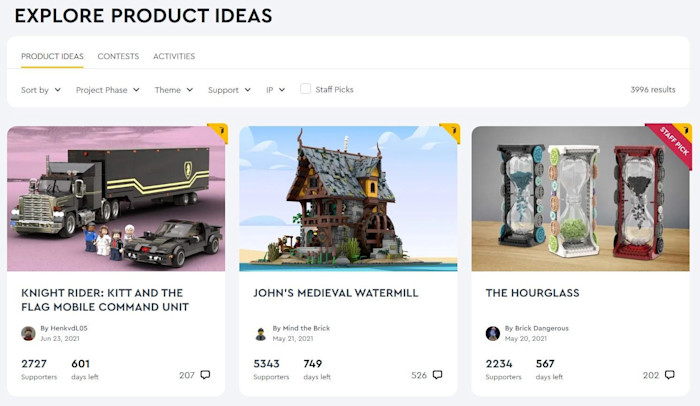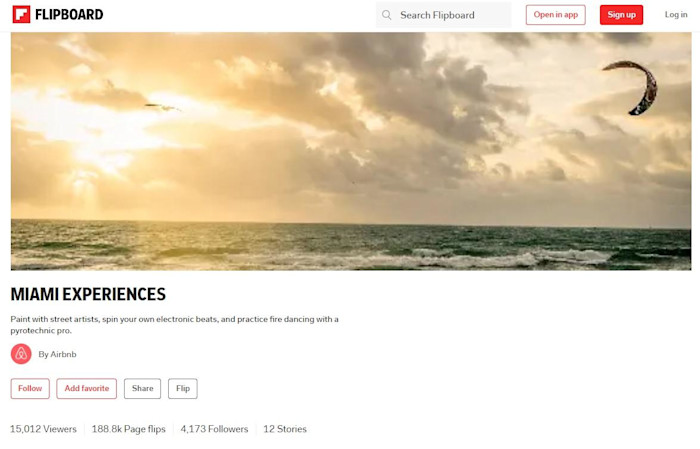Product development and marketing don’t happen Mad Men-style anymore. Customers don’t want to be told what to like—they want to tell you what to build.
Collaborative product development aims to involve customers—as well as employees and industry partners—in the product creation process and beyond. Have you ever had a quick Zoom chat with a partner about your service? Have you left a message on a Figma mockup before? Or received a product idea from a customer? Then you’ve already done collaborative product development.
As a SaaS content marketer, I’ve worked with all sorts of companies who’ve used collaborative product development. Here’s how to lean in to that strategy and drive value with the help of your customers, your colleagues, and your partners.
1. Leverage your customers
Your customers are the market, so having a customer-centric strategy is an obvious choice. Even things like social listening and logging customer feedback are forms of collaborative product development, but there are other, more proactive ways to get your customers involved as well.
The best way to have your customers involved in product development is by having them actually come up with the products. It means a much briefer market validation period because the solutions originate from your core customer stakeholders—that means you can consider them pre-validated.
You can do this in a pretty low-touch way by sending a one-off survey via email or running a poll on social media to find out what people would like to see developed next. But there are also ways to be a bit more intentional: user interviews or a full-on program for customer involvement.
User interviews
Ross Chapman, Head of Design at Obodo, swears by user interviews: “We run a minimum of five user interviews and observe product walk-throughs for each project,” he told me. “Given that they’re the ones that are going to be using the product, it makes sense to get them involved with the CPD process as early as possible.”
They then test prototypes with users midway through the design process, offering the team a valuable validation point. Ross continued: “We prefer to mock up prototypes and watch the customers use them first to see what they instinctively do. Then we take all our learnings and use the most important ones for our second version.”
AutoLeadStar, a niche industry software company that helps car dealerships nail their marketing, uses a similar strategy, getting feedback from their customers through each product iteration: “It starts with the vision and core concept of the product, and it continues through Alpha and Beta stages, all the way to release and market feedback,” says Eliav Moshe, co-founder of AutoLeadStar. And the results speak for themselves: Eliav said that this customer involvement has led to stronger product-market fit.
“It’s not just about market surveys anymore,” he told me. “It’s about having in-depth conversations with your client base, so you can always be bringing solutions to the biggest pain points.”
Customer program
If you want to go even deeper, you can create a full-on community for customer involvement in product development, even building some sort of customer advisory board.
That’s what Oliver Charles did, and their customers had a huge part in determining how their first product—a crew neck sweater—would look and feel. And IKEA did this on a broader scale in 2018 with its “co-creation” platform, where it would include customers in all phases of product development, having them do things like sending photos of problem areas in their homes and suggesting solutions.
LEGO’s platform takes it one step further. You can submit ideas, and if enough people vote for them, they’ll actually get developed and sold. (You need to score 10,000 votes from supporters and pass the expert review stage to be considered.)

Companies with enough of a fan base could reap the most benefits from this kind of crowdsourcing. The voting system acts as an early assurance of the product’s success, and you’ll also get valuable data about audience interests and trends.
Regardless of how you involve your customers in the process, if there’s a chance you’ll be using their ideas, be sure to set up some basic legal guidelines, especially when it comes to copyright (e.g., what happens if a customer comes up with the next big thing?).
2. Leverage your colleagues
Sales teams, customer support teams, and on-the-ground employees have a ton of insight into customer pain points, which means they’re a great resource for collaborative product development.
Ideally, you’ll have feedback built in to your everyday processes—think comments on wireframes and collaboration in GitHub—but there are a couple other things you can try as well.
Hackathons
Tech companies love to host internal hackathons, where people from across the company get together to come up with ideas and even build prototypes—in a day.
Claravine, a campaign and content data management platform, is a great example. “We have quarterly company-wide hackdays with cross-functional teams working on a variety of product development projects,” says Chris Comstock, Chief Product Officer at Claravine. “Sometimes these prototypes go on to our roadmap for further development as they provide added value to our customers.”
If you don’t have the flexibility to run a full-fledged innovation competition, you can simply give your staff more autonomy in their day-to-day operations. By letting them know that experimentation is valued, you’ll create an environment that naturally fosters collaborative product development.
Dogfooding
Dogfooding means using your own product or service—most companies, especially in SaaS, do it naturally.
360Learning, a collaborative learning platform, does this exact thing. “Just like our clients do, 360Learning employees can use reactions, comments, upvotes, and forum discussions to address any bug issues or ideas for product improvement,” says Robin Nichols, Managing Editor at the company.
But it’s not enough for employees to just use your product or service—they need to also give intentional feedback about it. There should be an obvious place to report issues and offer feature ideas, and after product launches or updates, there should be a launch-specific feedback spot, whether it’s a live meeting or asynchronous collaboration.
Getting feedback from your colleagues, whether it’s through hackathons, dogfooding, or something entirely different, has the added benefit of creating a more engaging environment for employees, which can improve productivity and reduce turnover.
3. Leverage your partners
A lot of businesses shy away from collaboration and knowledge sharing with industry partners for fear of spilling company secrets. But if you do it right, your team could walk away with a tremendous amount of new insights, new industry contacts, and even a new lead or two.
And we’re not just talking about co-marketing here—this is full-on co-product development.
Take Airbnb and Flipboard: they teamed up in 2017 to co-create and co-promote Trips (now called Experiences), which allowed Flipboard users to find Airbnb hosts based on their interests. The campaign included special magazines on Flipboard (created by Airbnb) that highlighted Experiences in cities around the U.S.

Claus Enevoldsen of Flipboard wrote this about the partnership: “As with any good partnership, we set out to create a win-win program. Airbnb was looking to reach a qualified audience and create awareness around Experiences. At Flipboard, we were looking to create meaningful engagement for current readers, while giving people who had not used the app in a while an incentive to check out the service again.”
The collab was a win-win indeed. Their case study says that Flipboard generated 4.2 million Page Flips and drove some 38K visits to Airbnb (with a 9% click-through rate). Aibnb’s Flipboard profile also garnered 29K followers, which left the door open for future collaborations.
You can start with a more basic affiliate program, and then, once you know which partners are the most aligned with your values and goals, start brainstorming on collaborative product ideas.
Ultimately, creating an environment that fosters inclusive communication, both internally and externally, will absolutely have a positive outcome. Keep your mind open for input from all directions—and you might strike gold. You never know which collab will generate your next breakthrough.
This was a guest post from Mark Xavier Quadros, a SaaS content marketer that helps brands create and distribute rad content. Want to see your work on the Zapier blog? Read our guidelines, and get in touch.
[adsanity_group align=’alignnone’ num_ads=1 num_columns=1 group_ids=’15192′]
Need Any Technology Assistance? Call Pursho @ 0731-6725516







